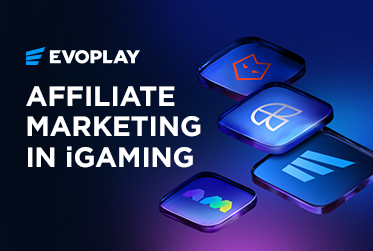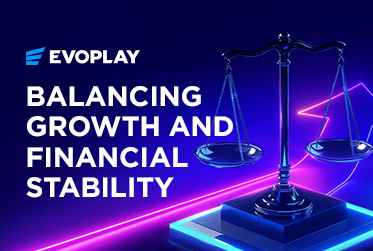How do you attract new players – those new to the world of iGaming and gambling – to your online casino?
Firstly, by understanding that while someone might be new to the online gambling experience, they are absolutely not new to gaming and gaming tech.
And you can’t easily attract them if you’re not offering what they now expect a game to be.
To appeal to this largely untapped group of gamers, you need to give them a gambling/betting experience that is new, but familiar. One that riffs on their gaming and social habits – one that makes sense to them.
Enter skill-based elements, quality mobile play, AR and VR, third- and first-person shooters, multiplayer, spectator participation, and premium gaming experiences, to name but some.
These are game components that will help you get people ‘through the door’, and once inside they’ll be exposed to the other more established games in your portfolio. But first… you have to appeal to their existing gaming interests.
More of the same
Online casinos actually already know this truth. They often tell us that they don’t have a huge problem when it comes to player retention. People come to play the games they know they like. They play them, and return to play them (and games similar to them), time and again.
Operators have a much bigger problem with new player acquisition. Solving this problem is all about getting the type of games you don’t yet have – the games your future audience can relate to because they play them in their mainstream gaming.
And many iGame developers are simply too slow in developing such titles.
Take mobile games, as an example. People want to play on their mobiles but don’t want to sacrifice quality. They want great graphics, fast downloading, no lag during play, and the same immersive experience comparable to playing on a PC or console. Regardless of the mobile device they use, they want it to just work. And work perfectly.
What’s it worth?
By the end of last year, mainstream mobile game revenue was valued at just over $76.5 billion. That was more revenue than the film and music industries combined ($60.7 billion).
That’s right… the biggest movie stars and recording artists couldn’t compete with games on someone’s phone. How much of that $76.5 billion could be moved to iGaming if mobile offerings gave more of a gaming experience, and offered the same quality?
I like to watch…
Mobile gaming is, of course, not new to iGaming. But it’s often a bad experience if the games don’t have an engine optimized for mobile play. A mobile-first approach to iGaming should be the first thing operators look for when partnering with game developers.
And what is played on mobile isn’t confined to just slots and instant games. How about esports, for example? The numbers are also compelling. And iGaming can get in on the action.
Tournaments, leagues, multiplayer teams – last year saw the esports industry explode, both in audience and in revenue. It pulled in almost half a billion viewers, and revenue of over $1 billion. China was the biggest audience, where income was pegged at almost $385 million.
That’s a lot of people watching other people play video games.
Now ask yourself, do people watch your players? And if they do, are those games actually compelling enough to watch for the play itself, not only the winning?
A report from Neilson earlier this year indicated that around 70% of millennial gamers aren’t just players – they’re watching games too (largely on YouTube and Twitch). Interestingly, those aged 18-25 are now more likely to watch gamers than watch traditional sports.
They might not know a gamer’s real name, but they’d prefer to watch him/her rather than watch Lebron James on a basketball court, or Lionel Messi on the football pitch. That’s a trend many in the industry would never have foreseen.
Real/Not real. There/Not there.
Augmented Reality (AR) and Virtual Reality (VR) have been growing in recent years, and as with esports, are on the cusp of a huge boom. It will likely take one big push from the likes of Apple, Sony or Samsung to see the market light up – and when it does, gaming will be at the forefront. Where then, will iGaming reside?
Five years ago, AR and VR technologies and games generated roughly $1 billion according to Treasure Data, and its reports from market analysts have predicted that this revenue will grow to a staggering $19-22 billion before the close of this year. A report from VYNZ Research put this number at $161 billion by the year 2025.
The mobile AR fun of Pokémon Go, which albeit briefly made global news, will be just the start. Could that lead to iGaming bringing poker, for example, truly into your home? Meaning, literally at your table. Could a video slot’s reels or scrolling play be displayed on the wall in front of you?
Combine AR and 5G with a mobile-first approach to game development, and an operator’s online casino won’t be limited to a screen that only one player can see. The potential for collaborative gaming and gambling is clear.
All of the above demonstrates growing exposure to new audiences, and that brings with it another potential revenue stream – advertising. And for gambling, it’s a dream vertical for affiliate marketing.
And this – market exposure – brings us back to the audience itself.
So who are they?
We’ve started to outline some of the approaches that iGaming needs to take to draw in new players. In the second part of this article (to be released next week), we’ll examine more of this tech, and also the audiences connected to it:
Generation B (Baby Boomers: b. 1940-59), Generation X (b. 1960-79), Generation Y (Millennials: b. 1980-94) and Generation Z (b. 1995-2010).
Each group has different gaming and iGaming needs. You might actually be surprised by the type of games each prefer.
But most importantly… understanding their entertainment needs, what they play, how they play and how they gamble, will give you great insight into how your online casino needs to offer more when it comes to games.
Not necessarily more games… just new games that reflect the trends in mainstream gaming.
Check out our blog next week for Part II.
To keep up-to-date with our articles, follow us on LinkedIn, Facebook, and Instagram.




























